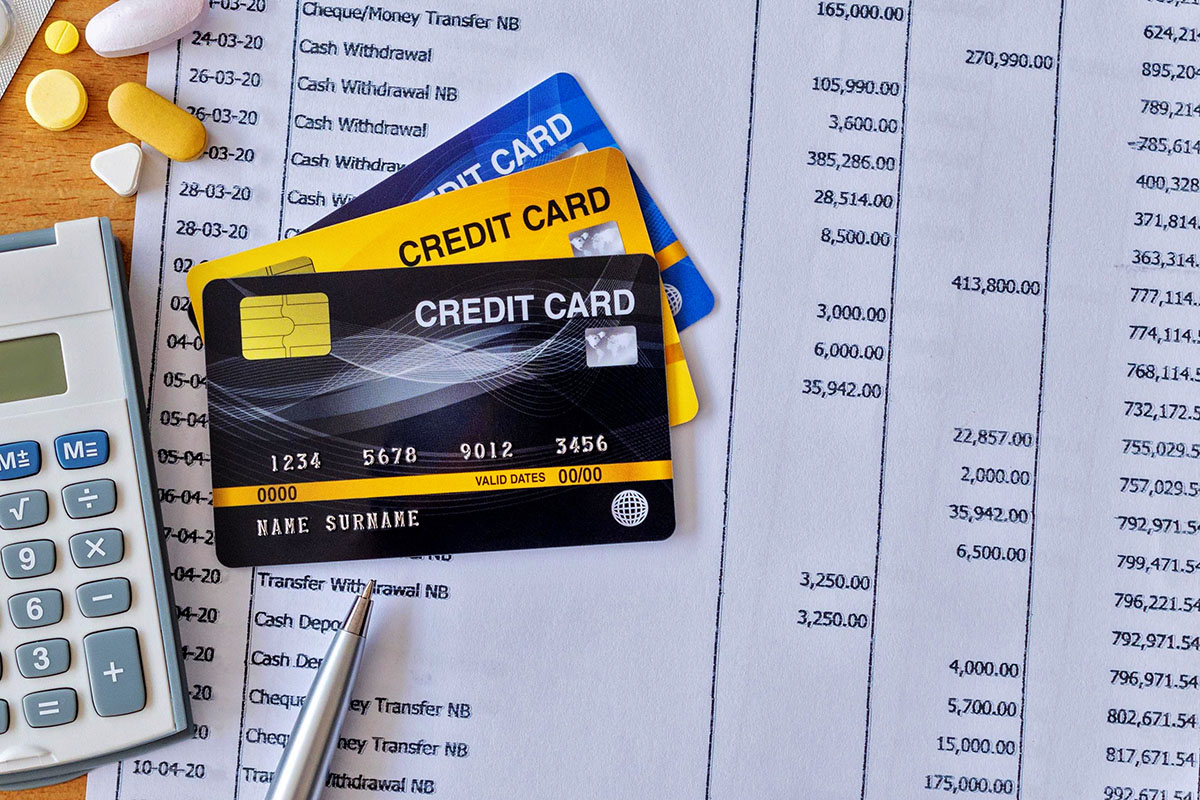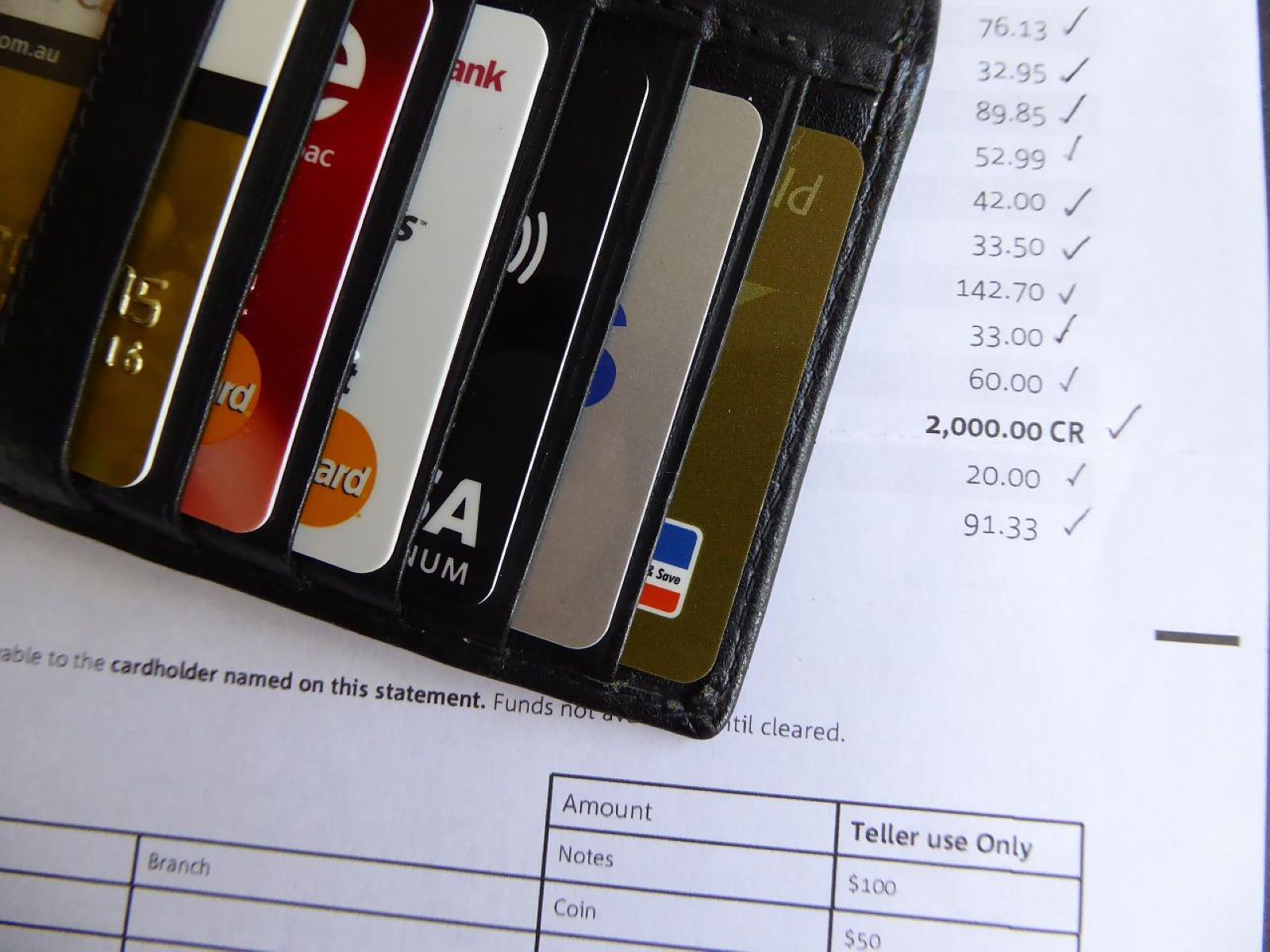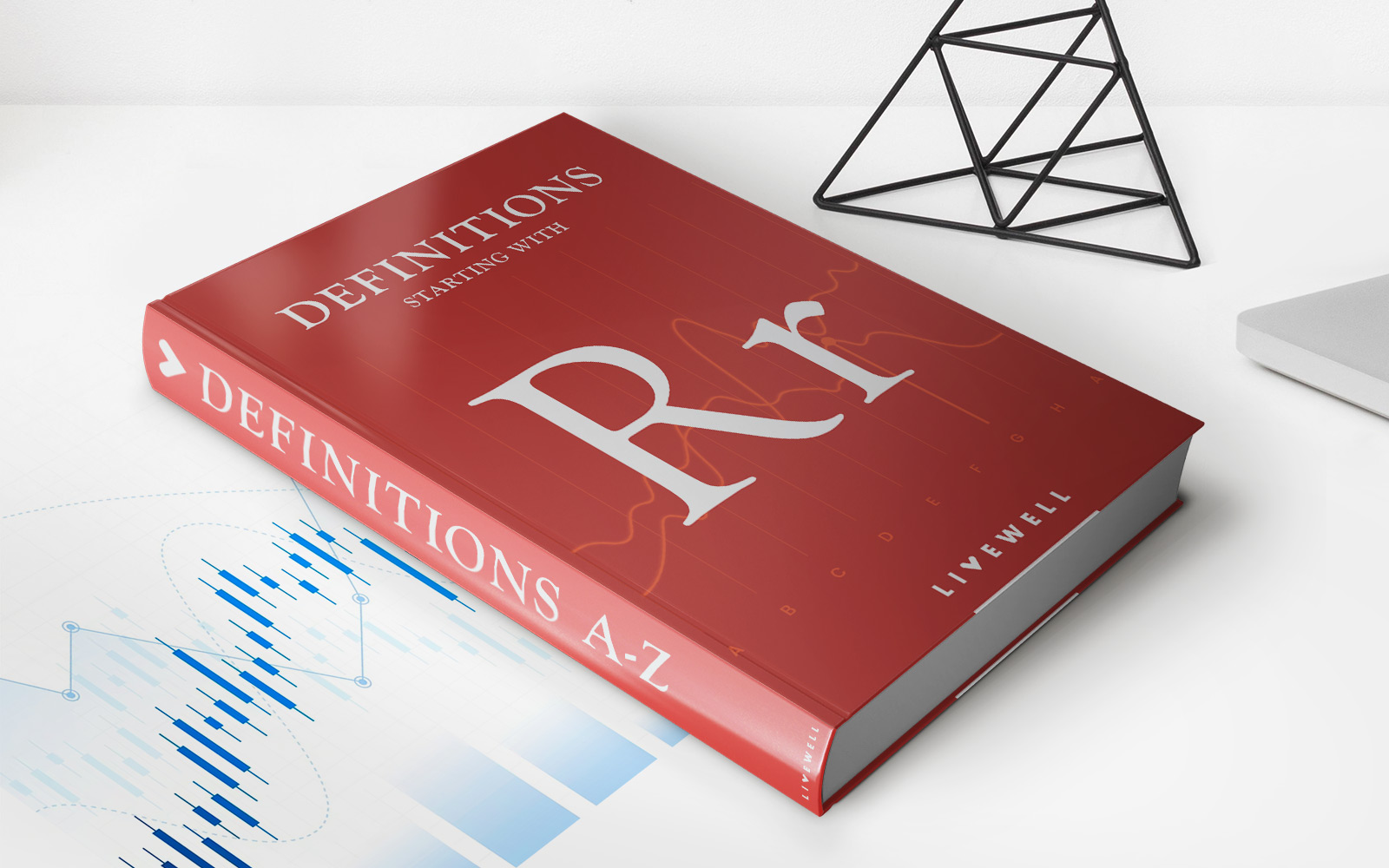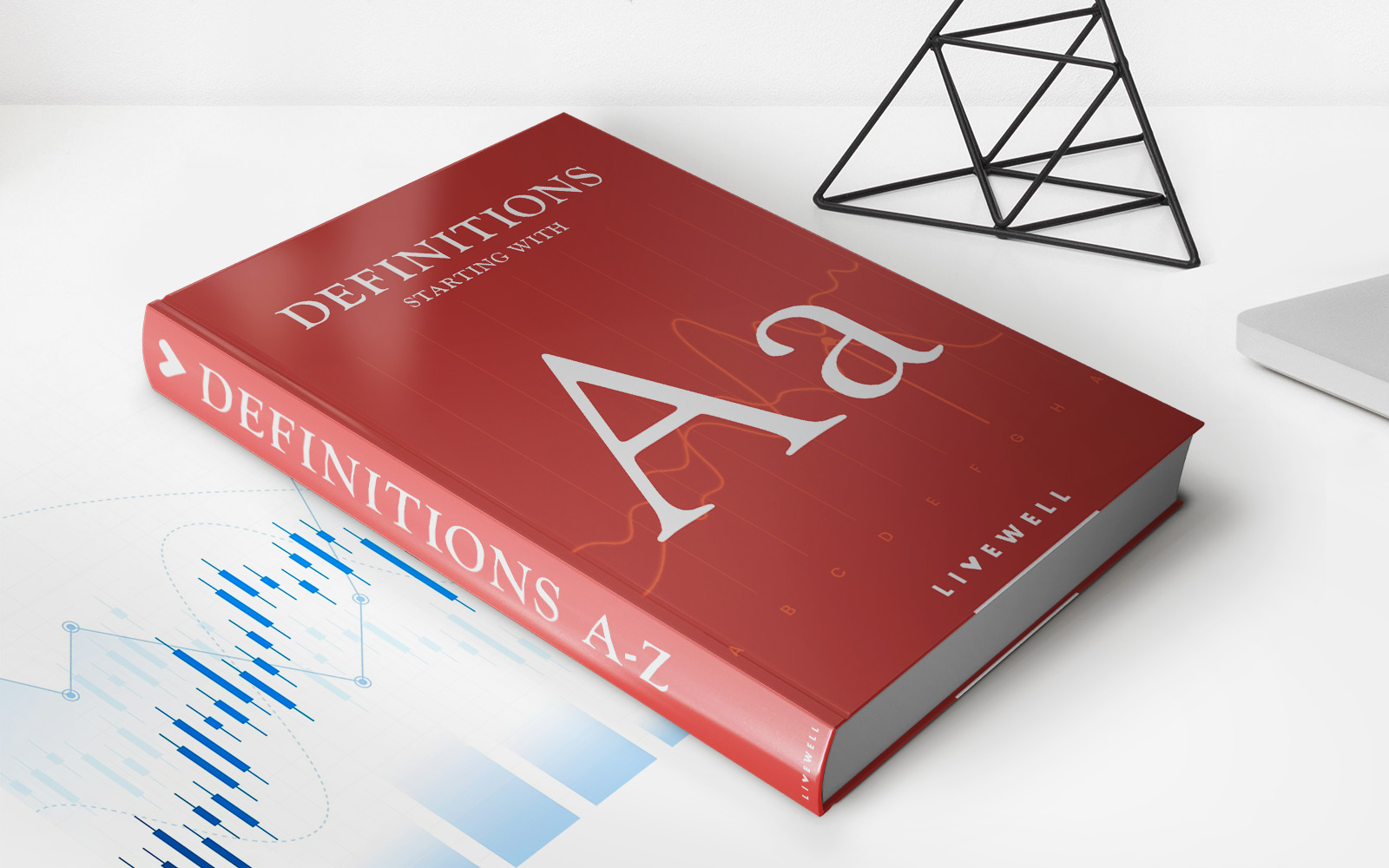

Finance
What Does TST Mean On Credit Card Statement
Published: November 7, 2023
Discover what TST means on your credit card statement and how it relates to your finances. Uncover the mystery behind this abbreviation and gain clarity on your financial transactions.
(Many of the links in this article redirect to a specific reviewed product. Your purchase of these products through affiliate links helps to generate commission for LiveWell, at no extra cost. Learn more)
Table of Contents
- Introduction
- Understanding Credit Card Statements
- What Is TST on a Credit Card Statement?
- Possible Meanings of TST on a Credit Card Statement
- TST as a Merchant Identifier
- TST as a Transaction Description
- TST as a Mistake or Error on the Statement
- How to Resolve Issues Related to TST on a Credit Card Statement
- Conclusion
Introduction
When it comes to managing your finances, credit cards play a crucial role. They offer convenience and flexibility for making purchases, but they also come with the responsibility of keeping track of your expenses. One important aspect of credit cards is the monthly statement, which summarizes all the transactions made during a billing cycle.
However, credit card statements can sometimes be confusing, especially when you come across unfamiliar acronyms or abbreviations. One such example is “TST” that may appear on your credit card statement. If you’re wondering what TST means on a credit card statement, you’ve come to the right place. In this article, we will dive into the meaning behind TST and explain the possible interpretations.
Understanding what TST stands for on your credit card statement is crucial for ensuring that your finances are in order and that you are not a victim of any fraudulent activity. By shedding light on the possible meanings of TST, we aim to demystify this acronym and provide you with the necessary knowledge to effectively manage your credit card statements.
Understanding Credit Card Statements
Before we delve into the meaning of TST on a credit card statement, let’s first establish a basic understanding of credit card statements themselves. A credit card statement is a document provided by your credit card issuer that details your financial activity for a specific billing cycle.
The statement typically includes information such as your outstanding balance, the minimum payment due, the due date for payment, and a summary of the transactions you made during the billing cycle. It serves as a snapshot of your credit card activity, allowing you to keep track of your spending, identify any errors or discrepancies, and reconcile your finances.
When reviewing your credit card statement, it’s important to pay attention to the different sections, including the transaction history, fees, interest charges, and any other relevant information. This will help you understand your financial obligations and make informed decisions regarding your credit card usage.
Now that we have a basic understanding of credit card statements, let’s explore the meaning of TST when it appears on your statement.
What Is TST on a Credit Card Statement?
TST is an abbreviation that may appear on your credit card statement, but its exact meaning can vary depending on the context. It is crucial to understand that TST is not a standardized industry term but rather a code or identifier used by individual credit card issuers or merchants.
When you see TST on your credit card statement, it is essential to investigate further to determine its specific meaning. This can be done by examining the associated transaction details, researching the merchant name or contacting your credit card issuer for clarification.
While the exact interpretation of TST may differ, there are a few common explanations for its appearance on a credit card statement. These include TST as a merchant identifier, TST as a transaction description, or TST as a mistake or error on the statement.
Let’s explore these possibilities in more detail to gain a clearer understanding of what TST could represent on your credit card statement.
Possible Meanings of TST on a Credit Card Statement
When encountering TST on a credit card statement, it’s important to consider the various interpretations it could have. While the specific meaning may vary, here are some possible explanations for TST:
- TST as a Merchant Identifier: In some cases, TST may represent an abbreviation or code used by a particular merchant to identify their business. Merchants occasionally use internal codes instead of their full business names, which can make it challenging to recognize the specific transaction. If you are unsure about the meaning of TST, review your purchase history, search for any familiar merchants or contact your credit card issuer to gather additional information.
- TST as a Transaction Description: TST may also serve as a brief description of a transaction. Sometimes, merchants provide generic or abbreviated descriptions of purchases, using codes like TST instead of providing detailed information. To gain clarity on such transactions, compare the date and amount of the TST entry with your records to identify any corresponding purchases.
- TST as a Mistake or Error on the Statement: Occasionally, TST might be an error or mistake appearing on your credit card statement. It could be due to a processing error, typographical mistake, or system glitch. If there are unauthorized or unrecognized transactions associated with TST, it is crucial to promptly report them to your credit card issuer to initiate an investigation and resolve the issue.
Remember, these are possible meanings for TST on a credit card statement, but the exact interpretation can only be determined by investigating the specific transaction details and consulting with your credit card issuer or merchant.
Next, let’s explore how to address any issues related to TST on your credit card statement.
TST as a Merchant Identifier
One possible interpretation of TST on a credit card statement is that it serves as a merchant identifier. Merchants sometimes use internal codes or abbreviations to identify their businesses, which may appear as TST on your statement.
When you notice TST as a merchant identifier, it’s essential to review your purchase history and try to identify any familiar merchants that could match the TST code. Look for any recent transactions that correlate with the TST entry in terms of the date, location, or purchase amount.
If you have trouble identifying the merchant behind the TST code, you can try conducting an online search using the transaction details or keywords related to your purchase. Often, other customers who encountered similar descriptions or abbreviations might have shared details about their transactions, which could help you determine the source of the TST entry.
If your efforts to identify the merchant are still unsuccessful, it is recommended to contact your credit card issuer directly. They can access additional information related to the transaction and provide you with more insights into the nature of the TST entry. They might even be able to assist in identifying the merchant behind the code.
Remember, being aware of the specific merchant associated with the TST code can help you reconcile your expenses more accurately and detect any unauthorized or fraudulent transactions on your credit card statement.
Now, let’s explore another possible explanation for TST on a credit card statement—TST as a transaction description.
TST as a Transaction Description
Another possible meaning of TST on a credit card statement is that it serves as a transaction description. Sometimes, merchants provide abbreviated or generic descriptions for purchases, and TST could be one such shorthand representation.
If you come across TST as a transaction description, it is important to review the associated details carefully. Take note of the date, time, and amount of the transaction. Cross-reference this information with your records, such as receipts or online purchase confirmations, to determine which transaction corresponds to the TST entry.
If the transaction was recent and you can recall the purchase, consider the type of goods or services you acquired that could be related to the TST entry. For example, if you recently made a purchase from a clothing store and the TST entry coincides with the date and amount of that purchase, it is likely that TST represents the transaction for the clothing item.
If you are unable to recall the specific purchase or the details do not align with any recent transactions in your memory, performing an online search using the TST description and any relevant keywords might yield insights. Other customers who encountered similar transaction descriptions might have shared details about their purchases, which could help you identify the nature of the TST entry.
If you are still unable to determine the exact transaction associated with TST, it is advisable to contact your credit card issuer. They have access to more detailed information about the transactions and can provide you with further clarification.
Remember, understanding the specific transaction behind the TST entry helps you keep track of your expenses accurately and enables you to identify any discrepancies or unauthorized charges.
Now that we’ve explored TST as a merchant identifier and transaction description, let’s move on to discuss the possibility of TST being a mistake or error on the credit card statement.
TST as a Mistake or Error on the Statement
In some cases, TST appearing on a credit card statement could be a mistake or error. It is not uncommon for errors to occur during the billing and processing of credit card statements, leading to the inclusion of incorrect or unfamiliar entries like TST.
If you suspect that TST is a mistake or error on your statement, it is important to take prompt action. Begin by reviewing your transaction history and comparing it with the TST entry. Look for any inconsistencies or discrepancies, such as incorrect dates, amounts, or unfamiliar merchants.
If you find any unauthorized or unrecognized transactions associated with TST, it is crucial to report them immediately to your credit card issuer. They have specific procedures in place to investigate and resolve such issues. Contact the customer service department of your credit card issuer and provide them with the details of the questionable transaction. They will guide you through the necessary steps to address the situation.
It’s important to note that errors can occur for various reasons, including technical glitches, data entry mistakes, or even fraudulent activity. By reporting the issue promptly, you not only protect your finances but also help your credit card issuer identify and rectify any potential systemic issues.
Remember to keep a record of your communication with the credit card issuer, including dates, names, and reference numbers for future reference. This will help in case further investigation or documentation is required.
Resolving any mistakes or errors on your credit card statement is crucial for maintaining the accuracy and integrity of your financial records. It also ensures that you are not held responsible for any unauthorized charges.
In the next section, we will discuss how to resolve issues related to TST on a credit card statement.
How to Resolve Issues Related to TST on a Credit Card Statement
Encountering TST on your credit card statement can be perplexing, but there are steps you can take to address and resolve any issues associated with it. Here are some recommended steps:
- Review your transaction history: Take a close look at your transaction history and compare it with the TST entry. Look for any anomalies, such as incorrect amounts or unrecognized merchants. This will help you gather information that can be useful when communicating with your credit card issuer.
- Research the transaction: Conduct an online search using keywords related to the TST entry. Other customers who have encountered similar descriptions might provide insights into the nature of the transaction or the associated merchant. This can help you identify the purchase and determine whether it is legitimate.
- Contact the merchant: If you have identified the merchant behind the TST entry but don’t recognize the transaction, consider reaching out to them directly. They can provide you with additional details about the purchase and help clarify any confusion.
- Communicate with your credit card issuer: If you are unable to identify the merchant or resolve the issue on your own, contact your credit card issuer’s customer service department. Explain the situation, provide them with the details of the TST entry, and express your concerns. They have the knowledge and resources to investigate the transaction and assist you in resolving any disputes or discrepancies.
- Document your communication: Keep a record of all your communication with the credit card issuer, including dates, names of the representatives you spoke with, and any reference numbers provided. This documentation will be valuable if further inquiries or follow-ups are necessary.
- Monitor your statements: Moving forward, be vigilant in reviewing your credit card statements regularly. Double-check all transactions and promptly report any suspicious charges or unfamiliar entries to your credit card issuer. Staying proactive helps maintain the security and accuracy of your financial records.
By following these steps, you can effectively address any issues related to TST on your credit card statement. Remember, it is crucial to take action promptly to protect your financial wellbeing and ensure the accuracy of your records.
Now, let’s conclude our discussion on TST on a credit card statement.
Conclusion
Understanding credit card statements is essential for managing your finances effectively. When it comes to deciphering the meaning of TST on your credit card statement, it’s important to consider various possibilities and take appropriate actions.
TST could represent a merchant identifier, a transaction description, or even an error on your statement. By carefully reviewing your transaction history, researching the associated details, and contacting your credit card issuer when needed, you can gain clarity on the nature of the TST entry and address any issues that arise.
Remember to stay vigilant and monitor your credit card statements regularly. Promptly report any unauthorized charges or discrepancies to your credit card issuer to ensure the accuracy and integrity of your financial records.
If you encounter TST on your credit card statement and are unsure about its meaning, don’t hesitate to investigate further. Contact your credit card issuer for assistance or conduct online research to gather information from other customers who may have experienced similar transactions.
Resolving any issues associated with TST requires patience and proactive communication. By taking the necessary steps outlined in this article, you can effectively manage your credit card statements and safeguard your financial well-being.
Remember, understanding TST and other abbreviations on your credit card statement empowers you to maintain control over your finances and ensures that you can confidently navigate the world of credit card transactions.














